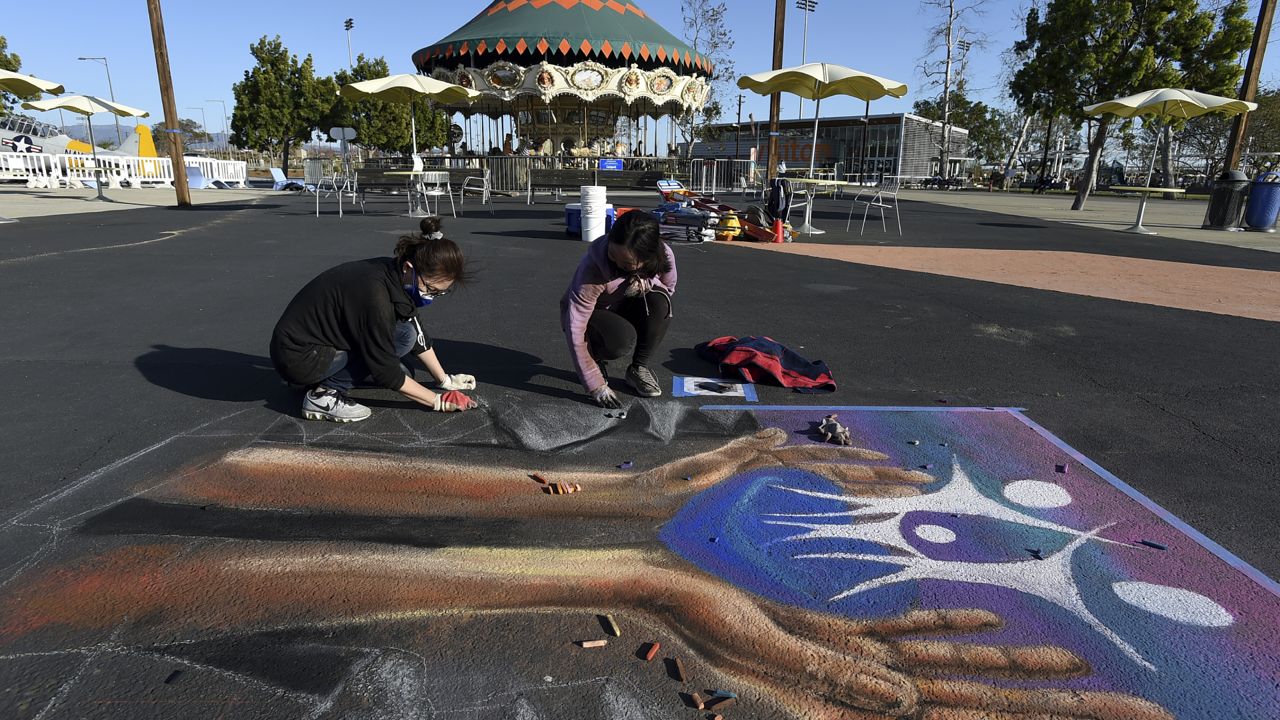SANTA ANA, Calif. (CNS) — Orange County's hospitalizations for COVID-19 reached a milestone Wednesday following the holiday-fueled surge when the number dropped below 200.
Hospitalizations dropped from 216 on Tuesday to 199, with intensive care unit patients dropping from 62 to 54.
"It's definitely good news," Orange County CEO Frank Kim said. "And our current running weekly number indicate our case rate is in the orange tier as well."
The case rate as of Wednesday was 3.8 per 100,000 residents. But that doesn't automatically propel the county into the orange tier of the state's economic reopening system. That will not happen until April 7 at the earliest if the current trends continue.
Kim said it could come sooner if the state authorizes it as it did when officials moved up the county's graduation into the red tier on Sunday instead of Wednesday.
On Wednesday, the Orange County Health Care Agency reported 163 new COVID-19 cases, upping the cumulative total to 249,067.
The county also logged 25 more fatalities. That boosted the death toll for February to 466, and since one of the deaths happened Dec. 9 it increased the death toll that month to 906. Deaths are often reported weeks after they occur.
The death toll for January, the deadliest month of the pandemic, stands at 1,412. So far in March the death toll is at 22.
The latest weekly update from the state, which is issued on Tuesdays, shows the county's test positivity rate improved to 2.2% from 3.2% from last Tuesday, and the adjusted case rate per 100,000 people on a seven-day average with a seven-day lag improved from 6 to 4.
The county's Health Equity Quartile rate, which measures positivity in hotspots in disadvantaged communities, improved from 4.1% last week to 3.5%.
That puts the county just one-tenth of a point away from meeting the threshold for the orange tier for case rate. If the trend continues, the county could move up to the orange tier by April 7, three days after Easter.
Kim said he was a "little nervous" about another surge such as the one being reported in Europe.
"The goal is to get these vaccines done and that's it," Kim said.
Lines are appearing at some local pharmacies as vaccines are ramped up at drug store chains. County staff has estimated that the big drug store chains are vaccinating about 100 people a day in each location, Kim said.
State officials have indicated the county will continue to receive its usual allocation of vaccine doses.
"We need more vaccines. I'm ready to open my next POD" for distributing doses, Kim said.
The county has inoculated about one million people, a little less than one-third of its population.
Orange County on Sunday went from the purple tier to the less restrictive red tier of the state's coronavirus regulatory system, allowing for bigger crowds in retail stores and the reopening of museums, movie theaters, and indoor dining at restaurants at limited capacity.
Bowers Museum in Santa Ana reopened Wednesday. The museum has extended its Disney exhibition and will offer visitors discounts to celebrate the reopening.
The county had been preparing to move from the most-restrictive purple tier to the red tier by Wednesday, but the timetable was moved up Sunday when the state met its goal of inoculating two million Californians in underprivileged communities where coronavirus has spread more widely.
The red tier allows for many more businesses and organizations to reopen. For instance, retail stores can allow for half capacity instead of 25%, and museums, zoos, and aquariums can reopen for indoor activities at 25% capacity, as can movie theaters, gyms, and restaurants.
Wineries, breweries, and distilleries can reopen for outdoor business only.
Andrew Noymer, a UC Irvine professor of population health and disease prevention, said spring break is somewhat of a concern, but the pace of vaccinations may mitigate the impact.
"I'm not crazy about the timing of spring break, but... it's not automatic it will be a calamity," Noymer said.
Residents should avoid traveling during the break, "which means no Daytona Beach or Cancun," he added.
"I know a lot of people will ignore this advice and given the declines we continue to see I'm optimistic that we'll somehow skate through," Noymer said.
"Tomorrow [today] is St. Patty's Day, so I'm counting on the luck of the Irish. But it's a little hard to predict. If we get another wave in the U.S. the same way as Germany and Italy, then spring break may yet be indicted as an accessory after the fact."
Noymer added, "The biggest fear is grandma as opposed to the kid who goes to Daytona Beach. The difference this year is we've vaccinated 100 million Americans, including many grandmas, so I'm not quite as severe with my finger wagging as I was a year ago, but I still think the prudent step is to just skip it."
The county on Wednesday also reported 10,564 COVID-19 tests, raising the cumulative total to 3,201,590.
The county is doing 312.9 tests per 100,000 on a seven-day average with a seven-day lag.
"We're still in the low 300s, and the reality is we're where the rest of the state of California has dropped to," Kim said.
"So now we're having discussions about how to modify our testing program to encourage greater numbers of people with symptoms to come out and test. We have to find a way to make it even easier, because the demand isn't there anymore."
